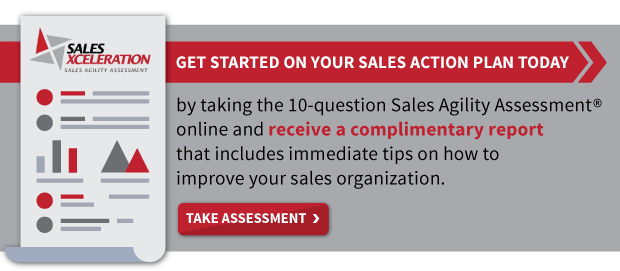
Orig. Post October 4, 2012 by Forbes | Re-Post January 14, 2015
The sales leadership job is one of the toughest in business today. I have previously written about why this is so, but suffice it to say it is a few critical jobs rolled into one: super seller, coach, strategist and business leader. I have had the chance to work with thousands of sales leaders over the course of my career and have observed that the most successful among them possess key characteristics: the seven keys to being a great sales leader.
1. Create useful success metrics that mark progress, not just report results. Most sales leadership jobs demand a series of metrics that indicate results that have been achieved. Revenue and profit contribution are classic examples of these very important measures. But there is another side of the metric scale which includes those measures that are indicative of progress toward those goals—successful sales calls, implementation planning meetings, and the like are examples. The key difference is creating a balance of those that are backward-looking or lagging indicators, and others that are forward-looking, or leading indicators. Having both is vital to success.
2. Provide visionary leadership. There are few audiences more cynical than sales professionals (I have found lawyers and accountants to come close), so providing clear and definitive leadership is critical. Since most sales organizations serve as the nosecone of the business, as customer and product or service issues impact them first, they benefit greatly from having a vision for the entire team. The sales leader must be the exemplar of that vision, as the team will be watching. Pithy and concise are the themes for your sales team’s vision, which should dovetail with the organization’s vision.
3. Develop talent and coach relentlessly. Many a sales leader has risen through the ranks as a great seller to a sales leadership position. One of the problems I frequently hear about sales leaders is that they were great individual contributors but they haven’t quite taken hold of what it means to be a sales leader. Most of the time, the fundamental issue is a lack of coaching and development of talent. All too often they are narrowly focused on the role of super closer in an effort to drive business instead of building sales capability across a team.
4. Pay close attention to your selling roles and understand how you get involved in sales cycles. I have seen four distinct roles that sales leaders take on: Model—you run the call, Observer—you observe only with an intent to coach following the call, Teammate— you engage in joint selling with clearly defined responsibilities to take on specific topics during the call, and Strategist—you provide pre-call planning guidance and post-call support. Each of these selling roles has a unique purpose and impact, so it is imperative that the sales leader is intentional about what role they are playing as they support business development efforts.
5. Focus on creating value in the sales process. For many, success in selling is far less about what they are selling and increasingly about how they sell. Said simply, it’s about how, not what. That how is creating value in the sales process, and sales leaders can engineer the sales experience of customers to be one that is worth paying for. The litmus test for this is, as sales guru and a former boss of mine, Neil Rackham, has said is: “Would the customer write you a check for the sales call?” A sales call worth paying for is the pinnacle of value creation, and those interactions provide insights, new approaches and ideas for solving problems, and innovative opportunities to capitalize on, instead of simply a description of products and services.
6. Forecast with an understanding of where the customer is in the buying process. By and large, forecasting tools are centered on a series of tasks that sellers perform during the course of a sales cycle. What they too often lack is the perspective of the buyer and where the buyer is in the decision process. One of my mentors, John Hoskins, often said “if you want to learn how to sell, learn how buyers buy.” When forecasting, include milestones of customer behavior and joint accountabilities like “mutually reviewing a proposal together” versus “proposal sent” to have a considerable impact on forecast accuracy.
7. Motivate with recognition and rewards. I’ve said before that sales professionals have a reputation for being prima donnas, and, having spent my career in sales, I think the stereotype is correct. (It takes one to know one, right?!) That means a good sales leader has the opportunity to use this to their advantage and develop a strong rewards and recognition program. Rewards and recognition ought to be timely and relevant, and while an annual awards banquet is great, in order to reinforce behaviors it needs to be more frequent. Top performers value financial rewards for certain, but they also crave regular feedback on performance, autonomy, and degrees of freedom. Consider the myriad ways to reward and recognize in non-monetary form and you have a good recipe for an important element of sales team motivation.
Related posts:
No related posts.


